#Attalos
Note
Would Alexander have really married Cleopatra Eurydice? He seems to have respected her enough despite her relation to Attalus- some sources say when removing her statue from the Philippeum he transferred it to another respected place in Heraion. Did they get along personally? How would their marriage have changed matters, if at all?
Okay, first, I believe we have a confusion/conflation of Eurydikes. The one from the Philippion is Philip’s mother, wife of Amyntas III. Her statue was never removed out by Alexander, so I’m unsure what the asker is referring to? The statues were lost over time, but we have the statue bases, and descriptions of the monument. See especially Elizabeth D. Carney, “The Philippeum, Women, and the Formation of Dynastic Image,” in W. Heckel, L. Tritle, and P. Wheatley (eds.) Alexander’s Empire: Formulation to Decay (Claremont, CA, 2007) 27-70. For Eurydike herself, see Olga Palagia, “Philip's Eurydice in the Philippeum at Olympia,” in E. Carney and D. Ogden (eds.), Philip II and Alexander the Great (Oxford 2010) 33-41.
“Eurydike” became a dynastic name, so it keeps popping up among Argeads (and later). Philip’s mother was Eurydike, as was his daughter, wife of Philip III Arrhidaios: (Hadea) Eurydike. Also Kleopatra, niece of Attalos, took the name Eurydike when she married Philip. But she was never in the Philippeon. Philip’s only wife represented there was Olympias, mother of his heir, Alexander. Amyntas III and Eurydike appeared as his parents.
We have no idea if Alexander shared more than a few words with Attalos’s neice. Given her uncle’s hostility towards him, he would likely have minimized contact. Also, timing was against it. Alexander left on the heels of the marriage, was gone 6 months to a year, then likely kept his distance after his return. While Macedonian women were not as sequestered as in Athens, men and (respectable) unrelated women still didn’t mingle freely. If he did interact with her, it would have been when visiting the women’s rooms to see his sisters, with plenty of women present. If marrying a dead father’s widow had precedent, an affair with the wife of one’s living father was another thing. Alexander knew his mythology, and would’ve had no desire to be Hippolytos.* After he took the throne, he had to leave relatively quickly to settle affairs in the south…and she was (likely) dead before he returned.
As for the marriage… this was suggested by my colleague, Tim Howe: “The Giver of the Bride, the Bridegroom, and the Bride,” in T. Howe, S. Müller, and R. Stoneman, Ancient Historiography on War and Empire (Oxbow, 2017) 92-124. Nothing in the ancient sources says Alexander planned such a marriage BUT marrying the wife (especially if young) of the former king wasn’t novel in Macedonia; Archelaos did the same. It was accepted practice generally.
The titbit that might suggest Alexander did plan to wed Kleopatra-Eurydike … Olympias murdered her.
Now, ignoring Justin’s account of a son Karanos, which is wrong (for reasons I don’t have time to go into), Kleopatra-Eurydike’s child was a girl (Europa). That means Kleopatra had no power in the women’s rooms after Philip’s assassination. So why the hell would Olympias kill the infant (and her, by extension)? Revenge alone?
Possibly. Revenge, especially for a slight to timē (personal honor), was a perfectly respectable reason to kill someone. “Turn the other cheek,” or “When they go low, we go high,” is a very Christianized view. But an even better revenge would have been to let her live to raise an extra daughter under the king her uncle had insulted and schemed to replace. Philip had 3 prior adult/almost adult daughters. A 4th, well over a decade from marriageability, was a day late and a dollar short. She could expect a miserable existence in the Pella palace where she was no threat to Olympias.
Unless Alexander planned to marry her in a diplomatic solution to suppress Attalos’s faction, and secure Parmenion’s support. (Attalos had married Parmenion’s daughter.) I strongly suspect Philip’s final marriage was not the midlife-crisis love match Plutarch/Diodoros present, but an attempt to deal with push back in his latter years. Alexander may have decided that marrying the girl was the best way to deal with it too.
And if Alexander did plan to marry her, she was a threat to Olympias’ influence. This isn’t necessarily jealousy. Olympias may have decided that wooing the snake wasn’t sound policy. Remember that Alexander was barely twenty and Olympias would have been between 36 and 38, with oodles more political experience. While sure, her move was self-serving, it also may have been sound policy to keep her son from the match. (Two things can be true at once.)
Alexander need not have publicly declared an intention to marry his father’s widow; he had bigger fish to fry in the immediate aftermath. Yet if he’d discussed it privately, his mother may have moved to eliminate the possibility while he was out of the country. The brutality of the murder certainly suggests a vengeance theme.
Incidentally, while the death of Europa at Olympias’s hands (and Eurydike’s subsequent suicide) is not securely dated in our sources—except that Alexander wasn’t in Pella—it almost certainly occurred in the first months after Philip’s death, during Alexander’s first trip into the Greek south, to shore up support for the Persian invasion and re-ratify the Corinthian League.
As for how their marriage may have changed things…it would almost certainly have put Alexander under the thumb of Attalos-Parmenion. We can see, in the appointments of his two sons, that Parmenion alone held great sway in Alexander’s early years—but at least he wasn’t an in-law. For once, Olympias and Antipatros were likely on the same side. (Antipatros and Parmenion weren’t precisely friendly.) If, as I suspect, Philip made that marriage for political reasons, it suggests the Attalos faction—whatever that entailed—was strong enough to force Philip’s hand before leaving on a probable long-term campaign. That means Attalos was powerful. And a 20-year-old Alexander was no match for him, even if adolescent arrogance may have made him think he was. Olympias may also have decided/suspected that the Attalos-Parmenion tie wasn’t as strong as Alexander feared—which proved to be true. When push came to shove, Parmenion allowed Attalos to be eliminated on Alexander’s order.
Arrian glosses over all this. I wish we had the first two books of Curtius, who likely covered the story of Alexander’s accession in more detail. It would provide more clues. Attalos sorta comes out of nowhere at the end of Philip’s life. Although Diodoros’ account of his reign is so truncated we don’t know the marshals under Philip well, so he may have been around longer than it seems.
————-
* Alexander knew his mythology. Theseus’s second wife, Phaidra, was reportedly cursed to conceive a passion for her (more age-appropriate) son-in-law, Hippolytos. Yet Hippolytos had pledged his virginity to Artemis, offending Aphrodite, who was behind the curse. When Hippolytos rebuked poor Phaedra’s advances, she suicided, leaving a note implicating Hippolytos (for rape). As punishment, Theseus asked his father Poseidon to kill his son. While out in his chariot, a sea monster spooked the horses, he fell out the back but got tangled in the reins, and they dragged him to death. A variation exists in which Aisklepios brings him back from death but Hades is so offended/(worried) by this power, he asks his brother Zeus to strike down Aisklepios by lightning…which he does. One of the few cases of a god dying. (They’re immortal, yes…but can be killed; it’s just that few things can kill one. Being fried by lightning will do it.)
#asks#Kleopatra-Eurydike#Alexander the Great#Philip II#Attalos#Attalus#Cleopatra-Eurydice#Olympias#Macedonian marriage#Parmenion#ancient Macedonia#Alexander the Great's early years#ancient Greece#Classics
10 notes
·
View notes
Text

En Attalos Seguridad Industrial, sabemos lo importante que es mantener a los trabajadores seguros y cómodos mientras realizan tareas en lugares elevados. 🏗️
Trabajar en alturas requiere una atención especial a la seguridad, y los cables de posicionamiento son esenciales para garantizar que cada movimiento esté respaldado por la máxima protección. 🛠️🏗️🔒
Estos dispositivos no solo ayudan a prevenir caídas, sino que también proporciona una sujeción segura, mayor libertad de movimiento, comodidad y ergonomía al distribuir el peso de manera uniforme, evitando la fatiga y mejorando la postura.
Además, su uso es obligatorio en muchos trabajos en altura para cumplir con normativas de seguridad.
Estos cables se utilizan junto con arneses de seguridad y otros equipos de protección personal para proporcionar una seguridad integral en el trabajo.
Los equipos y complementos esenciales para trabajar en alturas incluyen arneses de seguridad, cables de posicionamiento, anclajes, mosquetones y conectores, y absorbedores de energía.
Estos elementos son fundamentales para garantizar la seguridad de los trabajadores que realizan tareas en alturas, distribuyendo fuerzas de detención de caídas, manteniendo a los trabajadores en una posición fija y conectando de manera segura los distintos componentes.
No olvides que para trabajar de forma segura en alturas también es necesario contar con equipos de protección personal como casco, gafas, zapatos y guantes de seguridad.
Estos elementos protegen al trabajador de posibles caídas, golpes en la cabeza, lesiones en los ojos, pies y manos, asegurando su bienestar en todo momento.
¡No comprometas tu seguridad ni la de tu equipo!
Visita #Attalos, tu tienda de #SeguridadIndustrial y descubre nuestra variedad de cables de posicionamiento y otros equipos esenciales para trabajos en altura.
0 notes
Text
Athener Kaffee-Tagebuch: Griechische Agora - Hephaisteion - Kerameikos - Lykavittos
Zurück in die Antike: Die Agora in Athen war in der griechischen Antike ein Versammlungsplatz der Polis und wurde für die Heeres-, Gerichts- und Volksversammlungen der freien Bürger genutzt. Er existiert seit etwa dem 5. Jahrhundert v. Chr. und bildet einen Gegensatz zum kultischen und politischen Machtzentrum der archaischen Burganlage der Akropolis. Daher stellt die Agora einen bedeutenden…
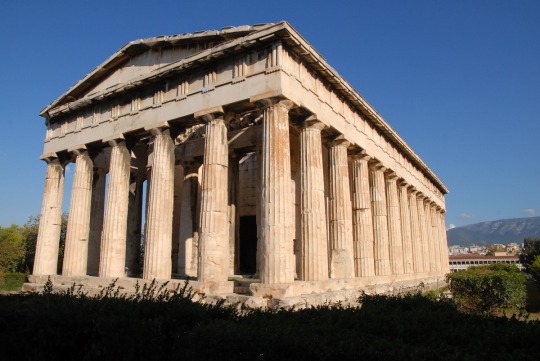
View On WordPress
#Akropolis#Apollon Patroos#Apostel Paulus#Archon basileus#Areopag#Ares#Athen#Athena#Athener Akropolis#Athens#Attalos#Attalos II.#Attalos II. Philadelphos#Cappuccino frappé#Cappuccino freddo#Cappuccino fredo#Evangelismos#Griechische Agora#Hephaisteion#Hephaistos#John D. Rockefeller#König Otto I.#König Otto I. von Griechenland#König Attalos II. Philadelphos#Kerameikos#Lykavittos#Nympheum#Odeion des Agrippa#Otto I.#Pantainos-Bibliothek
0 notes
Text
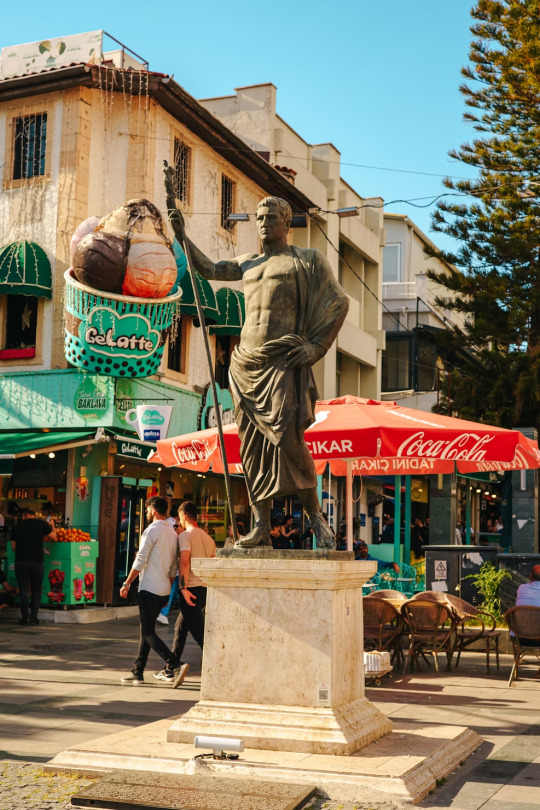
II. Attalos - Founder of the city, Muratpaşa, Antalya, Turkey
Igor Sporynin
#II. Attalos - Founder of the city#Muratpaşa#Antalya#Turkey#TurkeyArt#Statue#Sculpture#Art#Bicontinental
1 note
·
View note
Text
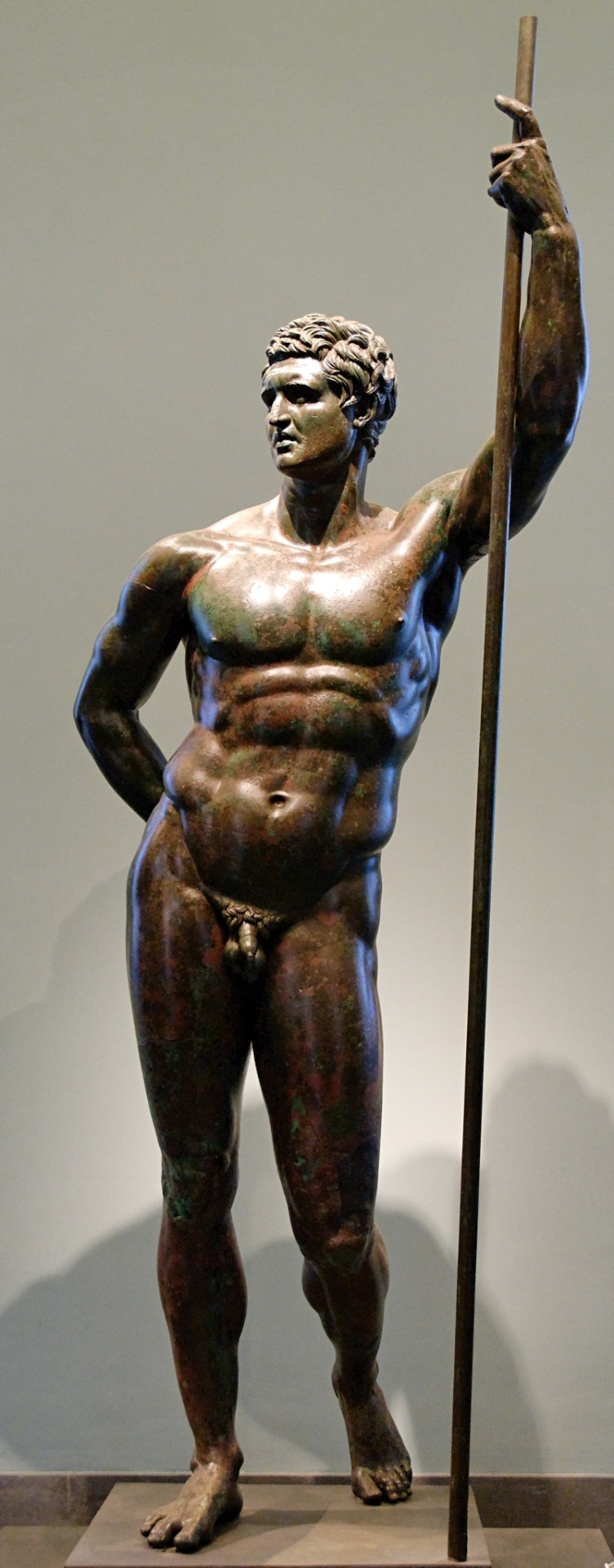
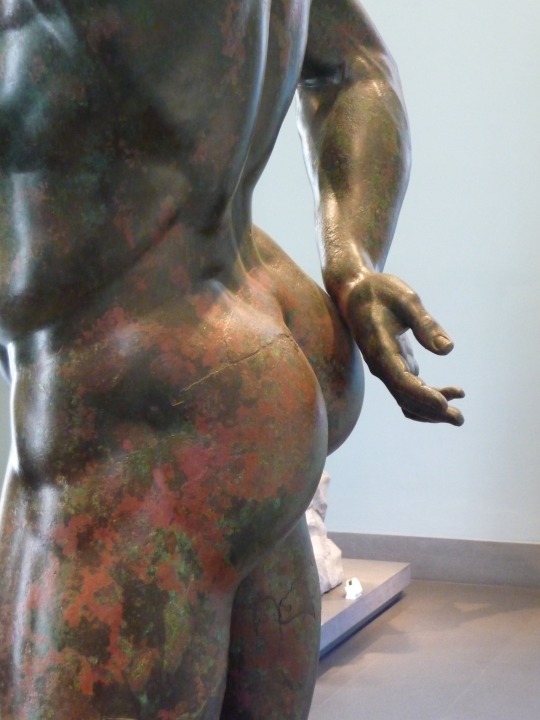
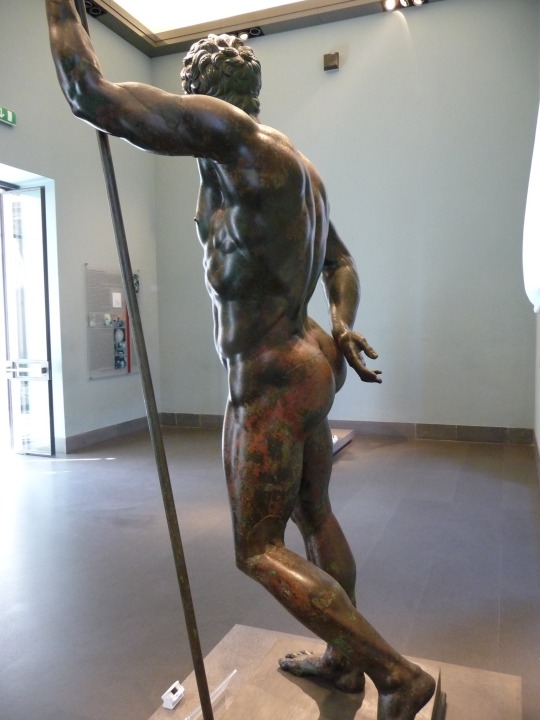
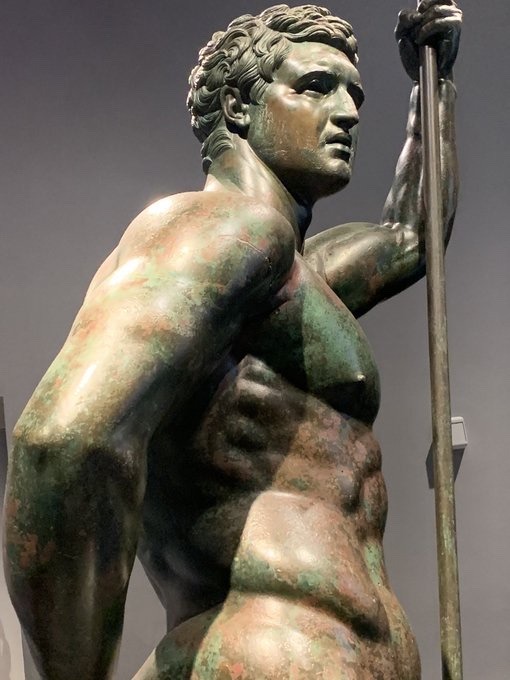
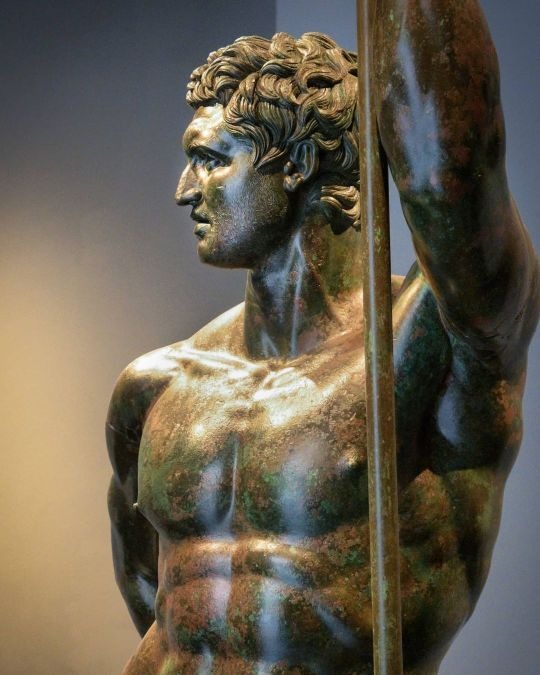


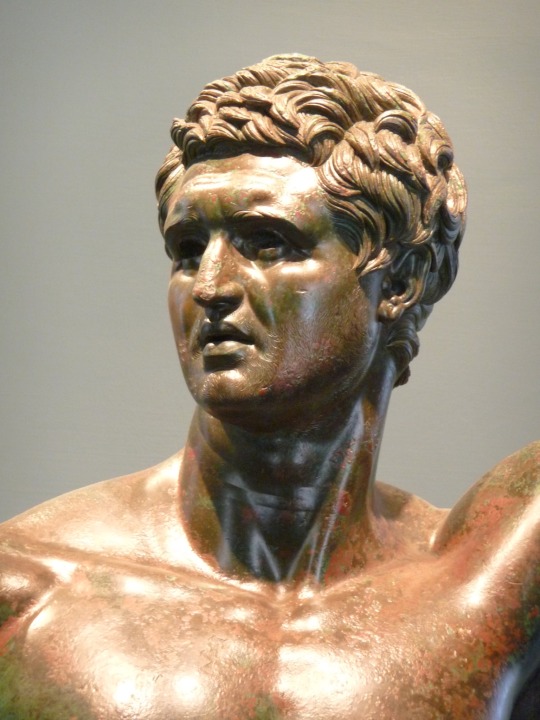
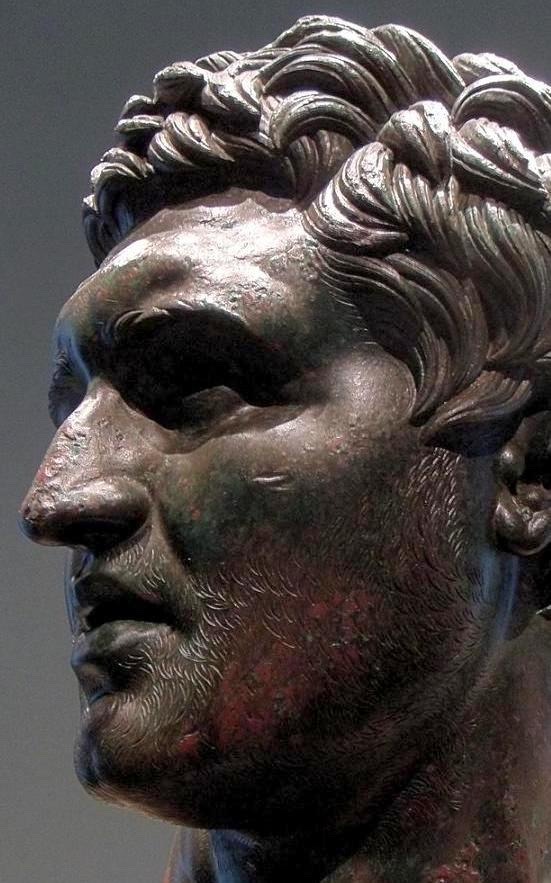
“The Hellenistic prince” or “the Seleucid prince” is a Greek bronze sculpture from the Hellenistic period (3rd-2nd centuries BC) that represents a naked young man (Attalos II has been wanted to be seen, but there is no consensus) who may being one of the diadochi (generals of Alexander the Great who divided up the conquered territories after his death). His body, perfect, muscular, allows us to see a winner leaning on his lance, with a penetrating gaze, lost in the horizon. His face shows a stubble.
Palazzo Massimo alle Terme, Rome.
818 notes
·
View notes
Text

OC Commission for @hithercamealexander ! Eurydice and Attalos
118 notes
·
View notes
Photo
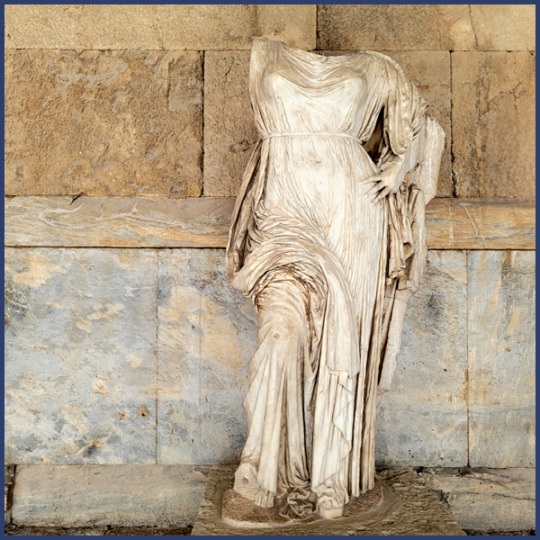
2023 : Nice Gown [Europe Trip Day 25 Athens]
“Statue of a goddess probably Aphrodite”, early 4th century BC. Stoa of Attalos, Athens, Greece.
10 notes
·
View notes
Text
The Stoa of Attalos (also spelled Attalus) is a monument that was once part of the ancient Agora of Athens.
8 notes
·
View notes
Text


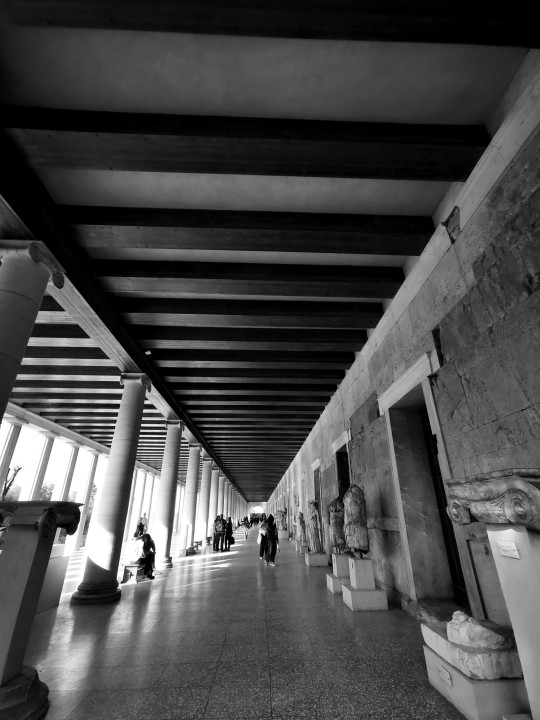



The Stoa of Attalos was a stoa (covered walkway or portico) in the Agora of Athens, Greece.It was built by and named after King Attalos II of Pergamon, who ruled between 159 BC and 138 BC. The current building was reconstructed from 1952 to 1956 by the American School of Classical Studies at Athens and currently houses the Museum of the Ancient Agora.
39 notes
·
View notes
Photo





Da: SGUARDI SULL'ARTE LIBRO PRIMO - di Gianpiero Menniti
VINCITORI E VINTI
Il “Galata morente” è una scultura in origine bronzea, risalente al 230-220 a.C., oggi conservata nei Musei Capitolini in copia marmorea.
Appartiene al filone ellenistico della cosiddetta arte pergamena, espressione della retorica degli “attalidi”, la dinastia di Pergamo, uno dei regni alessandrini eredità della stupefacente impresa del grande re macedone.
Si ritiene che fosse stata commissionata ad un artista di corte, Epifano, dal sovrano dell’epoca, Attalo I, quale rappresentazione inserita in una più ampia scenografia costituita dal gruppo votivo destinato al santuario di Atena Nikephoros sull’Acropoli di Pergamo: un gruppo celebrativo della vittoria conseguita contro i galati (galli) e destinato a consacrare il valore conquistato sul campo dalla dinastia regnante.
In effetti, la figura del guerriero sconfitto, giacente, vestito del solo "torquis" legato al collo, è a ben vedere un atto di esaltazione dei vincitori in una duplice ed essenziale evidenza: il guerriero è nudo, senz’armi, umiliato e consapevole, sconfitto, schiacciato da una forza che non ha paragoni per implacabilità.
Nello stesso tempo, la sua compostezza, l’armonia stilistica del suo giacere è la rappresentazione impareggiabile del contraltare di quella forza incombente e inarrestabile: la fragilità, la debolezza.
L’atteggiamento del vinto esibito è lo strumento di propaganda più intenso che si possa immaginare.
Morente?
Forse no.
Per il galata, la morte è già nell’arrendevolezza imposta che lo fa giacere a terra, quasi incredulo, il capo piegato in un’espressione di profonda rassegnazione e riflessione.
Il galata non è morente nella dimensione materiale ma in quella dello spirito guerriero annichilito che toglie respiro alla dignità del combattente, lo prostra fino alla consapevole e amara constatazione di una debolezza mai supposta e che adesso è costretto ad accettare.
Anche questa è l’arte ellenistica: celebrazione dei vincitori attraverso il pathos degli sconfitti.
- In copertina: Maria Casalanguida, “Bottiglie e cubetto”, 1975, collezione privata
10 notes
·
View notes
Text
Recently read through Kate Elliott's Unconquerable Sun and Furious Heaven, the first two parts of a trilogy described as genderbent Alexander the Great in space. Excellent books, but I didn't have the knowledge of Alexander's life necessary to draw the historical parallels. Fortunately, the author has a few essays up on tor.com explaining it. Unfortunately, she doesn't spell out all the connections, so here's what I have, ones stated by the author bolded:
(some spoilers, I guess)
Sun: Alexander the Great
Eirene: Phillip II of Macedon (Alexander's father)
Joao: Olympias (Alexander's mother)
Persephone "Perse" Lee: Ptolemy I Soter (Alexander's companion, later pharaoh of Egypt, noted for keeping memoirs and sponsoring mathematics)
Hestia "Hetty" Hope: Hesphaistion (Alexander's companion and lover)
Alika Vata: Perdiccas (Alexander's companion and general)
James Samtarras: does not have a historical analog, since he apparently fulfills multiple roles
Makinde Bo: Lysimachus (Alexander's general)
Razin Nazir: don't know, she hasn't shown up much, presumably one of Alexander's other companions/generals
Jade Kim: Craterus (Alexander's general, often distrusted for his ambition)
Tiana: Thais (courtesan who later became Ptolemy's consort)
Solomon: Seleuccas (Alexander's general, later founded the Seleucid Empire)
Octavian: no historical analog
Zizou: no historical analog
Crane Marshal Zaofu Samtarras: Parmenion (cautious older general contrasted against Alexander)
Anas Samtarras: Philotas (Parmenion's oldest son)
Angharad Black: Cleitus the Black (soldier who saved Alexander's life)
Moira Lee: Attalos (friend of Phillip's who arranged his marriage to Attalos's yougner relative)
Marduk Lee: Antipater (Alexander's regent in macedonia while he was away on campaign)
Nona Lee: Antigonus? I'm hesitant about this, but Nona is the only character I can think of who fits the description of "one of Philip’s old guard who unlike most of the rest of the older generation retained his importance long into and past the Alexander era"
Dimitar: Demetrius (Antigonus's son, the names match which supports the Nona=Antigonus theory)
Soaring Shan: Cleopatra (Alexander's sister)
Metis: Phillip Arhiddaeus (Alexander's half brother, deemed mentally unfit to rule)
Beau Qiang: Callisthenes (Alexander's historian)
Baron Voy: amalgamation of Demosthenes and Aeschines (athenian orators)
Baragesi: Darius III (ruler of the persians)
Jejomar Os Cook: Sisygambis (Darius's mother, captured by Alexander)
Bartholomew: Barsine (persian noblewoman who knew Alexander as a child, and later married him)
Manu: Memnon (greek mercenary who fought for persia)
Apama: this one I struggled with, Kate Elliott says, "She has an historical counterpoint and in some ways I consider her my most important gender spin in the entire story." But I couldn't find any corresponding person she could be genderbent from. Then I realized that "gender spin" could be referring, not to making a historically male figure female, but to giving a female figure the agency and role in this narrative that she didn't get in the historical record. So my guess is Apama I, a persian noblewoman from a region whose leaders were later referred to as Sabao, whose wikipedia page basically just lists her father, husband, and children.
7 notes
·
View notes
Note
Is it true that Alexander was against is baby sister Europa being killed? Or did he not know/have an opinion about it?
We don’t know when Olympias killed Kleopatra and baby Europa. Probably sooner rather than later; that is, on Alexander’s initial trip to south Greece, after he took the throne. By all accounts (and there aren’t many) he wasn’t in Pella when it happened. Plutarch tells us he was furious upon his return. He probably was, but not just because of the cruelty.
Tim Howe has an interesting theory in “Cleopatra-Eurydike, Olympias and a ‘Weak’ Alexander,” which suggests he’d intended to marry Kleopatra himself. This wouldn’t be the first example of a Macedonian king marrying the young widow of the prior king. Same thing happened with Archelaos who married the widow of his father Perdikkas II. (Ironically, she was also a Kleopatra.) Archelaos then killed his (unnamed) seven-year-old rival half-brother by Kleopatra. Although we can’t be 100% certain it’s the same woman, the likelihood is very high. We don’t know if the marriage occurred before or after he killed the boy. He then had a child himself by Kleopatra (which child, in turn, was murdered after Archelaos’s death and never took the throne).
Welcome to Macedonian politics.
In Alexander’s case, he wouldn’t have needed to kill the infant girl, as she was no threat. But by marrying his father’s widow, he could actively ‘perform’ his announced, “Only the name of the king has changed,” and secure political alliances before marching for Persia.
Yet a potential marriage on the horizon would be a very good explanation for Olympias’s action. On the face of it, the murder seems unduly vicious. An infant girl was, again, no threat—nor was Kleopatra herself. Perhaps Olympias did it purely for retribution, but she rarely acted for “mean” reasons. Killing Kleopatra suggests she was somehow still a threat. Why? Her uncle, Attalos, couldn’t be king (not an Argead), and her child was female. Why kill the widow?
Unless Alexander intended to marry her. What Alexander may have seen as good policy for him was a serious threat to Olympias’s own status. So she eliminated that option.
That would also explain Alexander’s apparent fury. Yes, he probably was horrified by the murder of an infant, but children under a year old already occupied liminal status, waiting to see whether they’d survive to their first birthday. I don’t mean that to be dismissive, but Europa’s life, or death, didn’t impact him much, politically. He may have seen her only a handful of times, so she was probably “nebulous” to him, his emotional reaction generic rather than specific.
His mother being responsible for the death of his father’s widow, however, DID impact him politically, upending any decision to marry her, plus requiring him to eliminate Attalos, who now had a blood feud with him. Supposedly, Attalos tried to tender an olive branch, but probably before he had news of his niece’s murder. So Alexander’s choice to have him assassinated (with Parmenion’s acquiescence) was a political choice necessitated by Olympias’s actions.
It would have been quite a mess, from a diplomatic POV. Olympias acted to safeguard her own security at court. But that, in turn, upset Alexander’s own plans, forcing him to reposition himself, leaving him desperate for Parmenion’s support, leading to high appointments for both Parmenion’s elder sons. It may have been the first serious (political) clash between mother and son. If normally, a mother’s fortunes in polygamous situations depended on her son’s, not always. Here, we see Olympias securing her own position by eliminating a rival…even if that then complicated her son’s political options.
The end result is that Alexander didn’t marry anybody before leaving for Asia.
Given his short life, that, in turn, resulted in a succession problem upon his death. Nobody could have foreseen as much in 336. Sometimes, you’re just trying to stay alive. But it had long-term consequences.
#asks#Olympias#Kleopatra-Eurydike#Cleopatra-Eurydice#Macedonian politics#ancient Macedonia#ancient Macedonian inheritance#Alexander the Great#Philip II of Macedon#Classics#polygamous courts
19 notes
·
View notes
Text

En Attalos, tu #BoutiqueIndustrial en #Huatulco, nos preocupamos por la seguridad y comodidad de los trabajadores en todos los ámbitos.
Por eso, te ofrecemos una amplia variedad de playeras de manga larga ideales para protegerte del sol y otros elementos en tu lugar de trabajo.
¿Por qué es importante usar playeras de manga larga?
Las playeras de manga larga son especialmente importantes para los trabajadores que exponen su piel al sol durante largos períodos de tiempo.
La exposición prolongada al sol puede causar quemaduras, cáncer de piel y otros problemas de salud.
Las playeras de manga larga pueden ayudar a proteger la piel de estos daños.
Son una prenda versátil que se puede utilizar en diversas industrias, como:
Construcción: Para protegerse del sol, el polvo y la suciedad.
Agricultura: Para protegerse del sol, los insectos y los pesticidas.
Industria petrolera y gasífera: Para protegerse de las llamas, las chispas y los productos químicos.
Servicios de limpieza y mantenimiento: Para protegerse del polvo, la suciedad y los productos químicos.
Eventos al aire libre: Para protegerse del sol, el viento y el frío.
En Attalos te ofrecemos una variedad de playeras de manga larga de las mejores marcas del mercado.
Contamos con prendas confeccionadas con telas transpirables, resistentes y duraderas, ideales para uniformes de empresas.
Visítanos en nuestra tienda y encuentra la playera perfecta para ti, en diferentes tallas, colores y estilos.
#Attalos#PlayerasDeMangaLarga#ProtecciónSolar#SeguridadLaboral#SaludOcupacional#Uniformes#TrabajoEnIntemperie#Construcción#Agricultura#IndustriaPetrolera#ServiciosDeLimpieza#EventosAlAireLibre#BoutiqueIndustrial
0 notes
Text
Samiotisches Kaffee-Tagebuch: Römische Bäder, drei Zähne und ein Strand
Samiotisches Kaffee-Tagebuch: Römische Bäder, drei Zähne und ein Strand
Nutzen wir die letzten Strahlen der Sonne um einen Blick auf die Römischen Bäder nahe Pythagorio zu werfen, die leider nicht direkt besucht werden können. Doch auch dieser Ort ist eng mit der Geschichte der Insel verbunden. Mit dem Tod des Königs von Pergamon Attalos im Jahr 133 v. Chr., ging Samos an Rom. Schon 129 v. Chr. besetzten die Römer Samos und etwa 84 v. Chr. gliederten sie die Insel in…

View On WordPress
#Antonius#Attalos#Cicero#Cleopatra#Festung Logothetis#Gaius Licinius Verres#Kleopatra#Logothetis#Logothetis-Festung#Lucullus#Marcus Antonius#Marcus Tullius Cicero#Pergamon#Plutarch#Pompeius#Pythagório#Pythagorio#römische Bäder#Samos#Sylla#Tria Dónda#Tria Donda#Tria Dontia#Verres
0 notes
Text
Step into the past at the Stoa of Attalos - your gateway to ancient Athens.
#goexploregreece#greece#travel#mustsee#mustvisit#europe#athens#holiday#museumsinathens#museum#museums#agora#travel guide
2 notes
·
View notes
Photo

Marble Bust. Stoa of Attalos Museum. Athens, Greece
20 notes
·
View notes